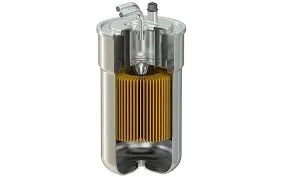Aug . 15, 2024 16:42 Back to list
What does a Fuel Filter Do?
What does a Fuel Filter Do?
A fuel filter is a component of an internal combustion engine that helps to remove the dart particles from the fuel. Fuel filters are important because they help to protect the engine from damage caused by contaminants in the fuel. In this article, I will discuss the types and working processes of a fuel filter.
What does a fuel filter do?
The fuel system of an automobile has filters and screens to prevent dirt in the fuel pump and fuel tank. Dirt causes, of course, poor engine performance; and prevents normal operation of the fuel pump. The fuel is filtered when it enters the fuel tank. In some cases, it is again filtered in the fuel pump. A fuel filter is located in some intake manifolds also. However, a separate fuel filter is also connected to the fuel pump and fuel tank. It filters the fuel before it enters the engine.
Fuel Filter Element diesel engine fuel filters 23390-0L070 23390-0L090 for HILUX
Ceramic-type fuel filter-
It shows a diagram of a ceramic-type fuel filter. It is connected between the fuel pump and the carburetor. It serves to catch any water or foreign particles that were not filtered out in the fuel pump sedimental bowl and strainer or in the fuel tank filter unit. The fuel entering the glass bowl passes through a ceramic filter (strainer) which separates the foreign particles; the filtered fuel comes out from it. The water and sediments are collected in the bowl which can be removed for cleaning.
Inline fuel filter-
The filter shown in Fig is installed in the fuel tank or carburetor(old model) itself. It has an element made of pleated paper. The function of the inline fuel filter is the same as another fuel filter. The filter typically consists of a cylindrical housing that contains a replaceable filter element, which captures particles and debris as the fuel flows through it.
-
China Brand Car Air Filter | Quality Engine & Cabin Protection
NewsAug.26,2025
-
High-Performance Automobile Air Filter for Optimal Engine Health
NewsAug.25,2025
-
Automobile Air Filters: HEPA, Carbon & New Car Upgrade
NewsAug.24,2025
-
Premium Antiskid Tires: Enhanced Safety & All-Weather Grip
NewsAug.23,2025
-
Best Antiskid Tires: Unrivaled Grip & All-Weather Safety
NewsAug.22,2025
-
Reliable China Cabin Filter Supplier | Quality Car Filters
NewsAug.21,2025



